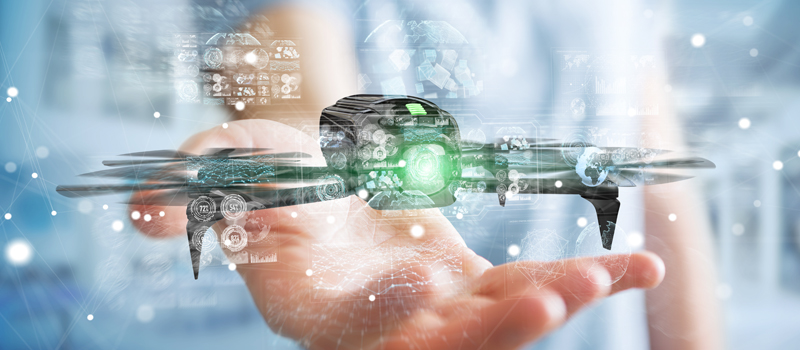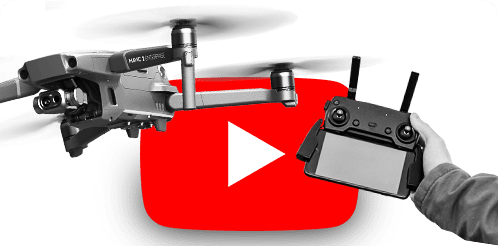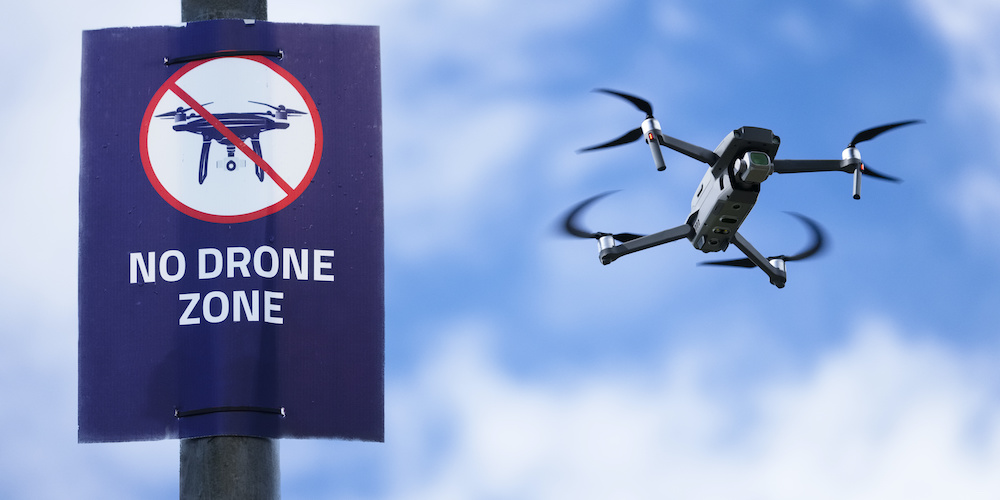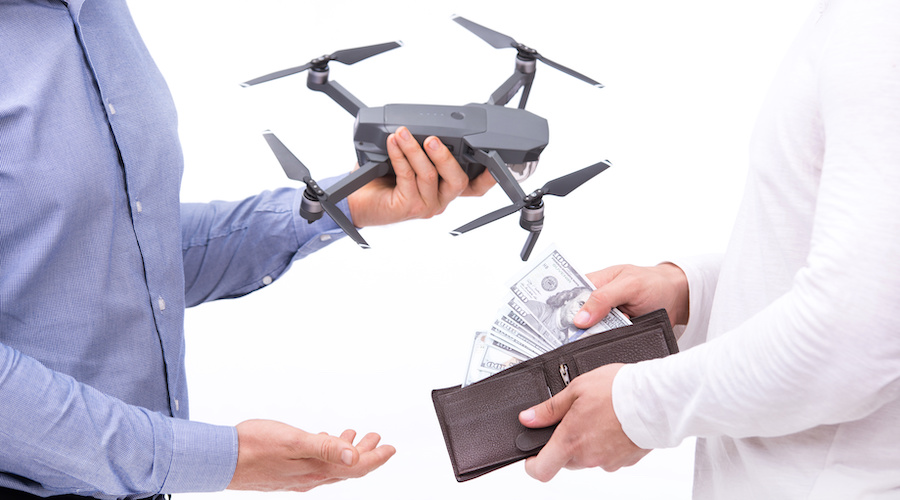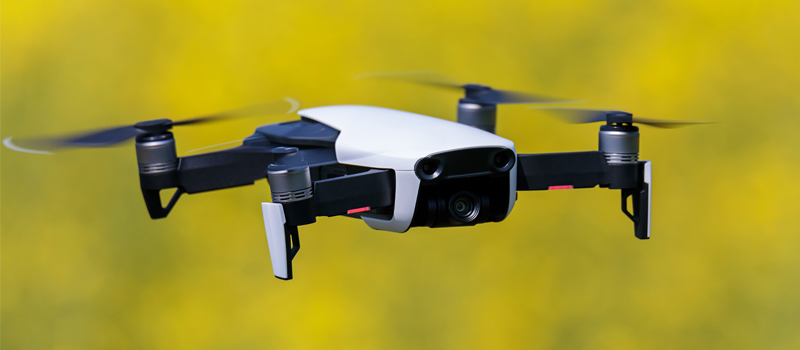-
The benefits of using drones for security
- Rapid deployment
- Automated security solutions
- Drone News Update
- Real-time communication
- Advanced imaging capabilities
- Easier access
- Cost savings
- American Manufacturer Freefly Talks New Product & Drone Ban - Matt Isenbarger - PiXL Drone Show #82
-
Possible security applications of drones
- Military applications
- Patrolling of marine and land borders
- Perimeter security of private lands
- Anti-poaching
-
Several issues of using drones for security
- FAA restrictions
- Privacy and safety concerns
-
Final thoughts
It is estimated that the security industry in the US alone will be worth around $39 billion by the end of 2020, driven by the security needs of office buildings, critical infrastructure, schools, hospitals, and factories. This huge market has proven to be a premium opportunity for the disruptive force of drone technology
All over the world, more and more drones are being used for both private and public security. Despite issues with safety and privacy, it is undeniable how drones are uniquely suited to modern surveillance needs. What is the advantage of using drones for security and how are they being used nowadays?
The benefits of using drones for security
Even though drones are now a lot more accessible than they were years ago, there’s little question that making the shift to drone technology takes up a considerable amount of investment in hardware and training. What compels companies and institutions to go through this hurdle? Here are just some of the benefits of shifting to drones for security:
Rapid deployment
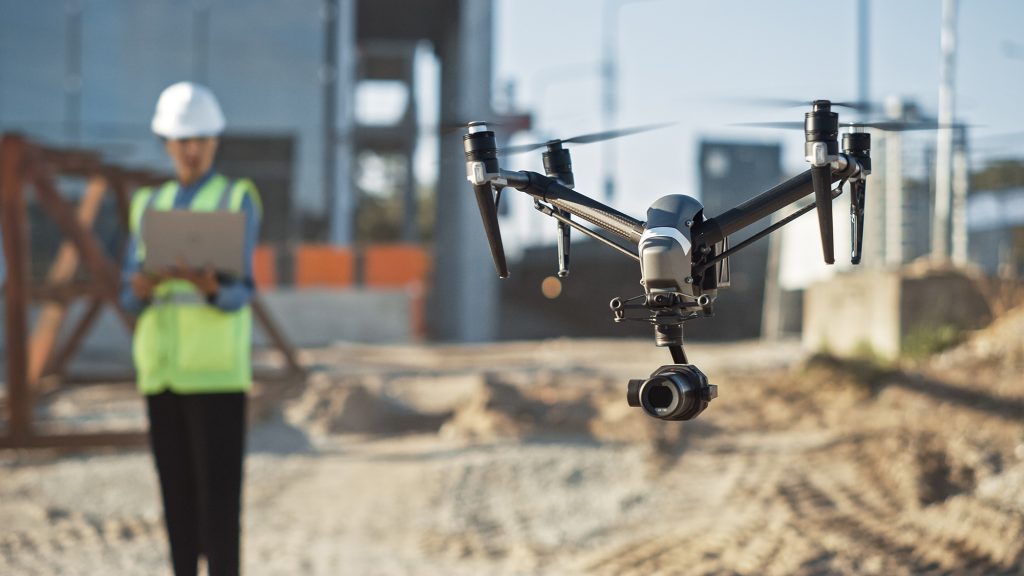
Before drones came around, aerial surveillance was difficult because of how expensive and difficult to deploy helicopters were. With a long pre-flight checklist and clearances to secure, it was not uncommon for hours of preparation to be necessary before a helicopter can take off.
Drones have greatly simplified the process. As long there were no airspace issues, drones can be deployed in just a few minutes. This has given security firms increased flexibility and the ability to respond to potential emergency situations almost instantaneously.
Automated security solutions
Drones have gotten incredibly smart in the last few years. With powerful processors and AI capabilities, drones can now be programmed to perform autonomous flights. This makes it possible for a fleet of drones to do regular rounds along pre-determined flight paths, even without a pilot actively flying them.
More recent drones have been designed with intelligent tracking systems. This allows the pilot to identify a subject – like a vehicle or a person – and command the drone to automatically follow them as they move. Smarter drones can even predict the trajectory of movement of a subject, allowing them to continue to track them even if they become visually obscured for a few moments.
If these sound like scenarios right out of a movie about a dystopian future, then you’d better believe that it’s already happening now. The main difference is that it’s not all that bad – you aren’t likely to see a fleet of drones flying above your house anytime soon. The FAA is also taking steps to make drones more identifiable and drone pilots more accountable.
Real-time communication
Through real-time streaming of videos from the onboard cameras of drones, security teams can keep an eye on everything that is happening on the ground as they happen. This is a huge upgrade to a network of static security camera systems, as drones are much more mobile and have a wider field of view. With current transmission technologies, it’s possible for a drone to deliver real-time video to a ground station located several miles away.
Advanced imaging capabilities
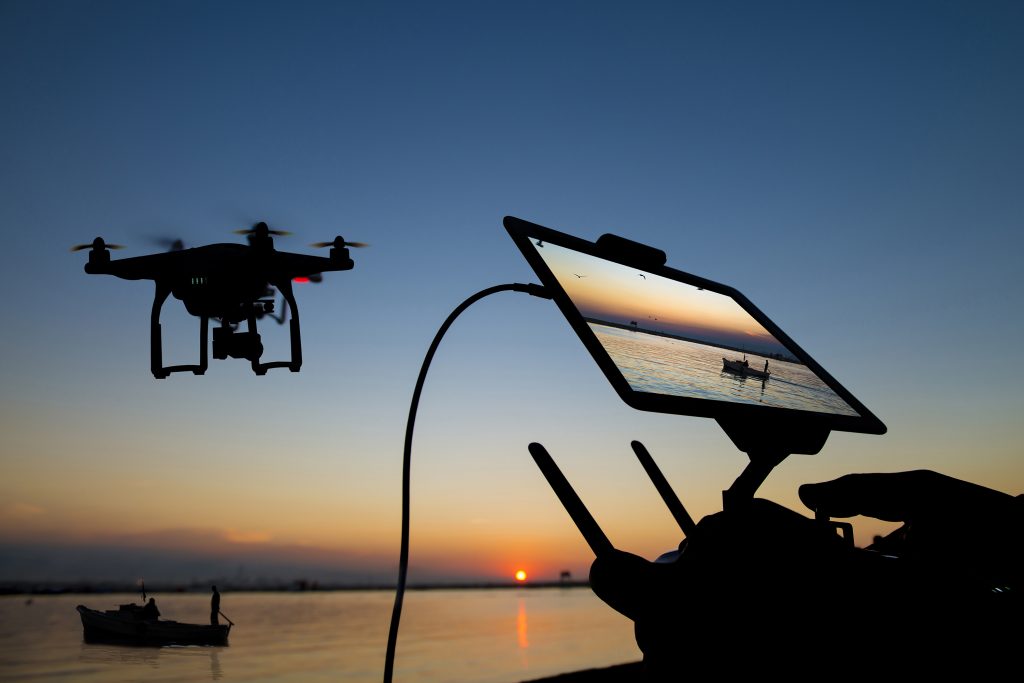
The level of sophistication of drone cameras has made them the new go-to device for professional photographers. These features also lend themselves well to surveillance, especially when there’sa need for high-resolution imagery and powerful zoom functions. High-end drones can also be equipped with thermal cameras for night-time surveillance.
While thermal imaging and high-resolution cameras are not new technologies, hooking them up to a drone is a novel idea that has proven to be incredibly valuable to the security industry. Whether at night or day, drones can provide versatile and reliable surveillance.
Easier access
Compared to both helicopters and land-bound security crews, drones have the unfair advantage of almost unfettered access to any location. Drones can fly at speeds of up to 40 mph. As they are not limited by terrain, drones can respond to a remote location faster than any security crews on foot or cars.
Drones are also small enough to fly around obstacles like trees and power lines – obstacles that helicopters tend to stay away from. In the hands of a skilled pilot, a drone can even negotiate indoor spaces. Basically, there’s very little that will constrain the movement of a drone, making them the ideal quick-deploy security tools.
One more thing that makes drones more suitable for responding to emergencies is that it does not put security personnel at any level of risk. If there were intruders in a private property, security personnel will typically follow a protocol that is designed to prevent them from coming into unnecessary harm. This will no longer be a concern with drones.
Cost savings
As we’ve mentioned, starting a drone-based security program will require significant investment. A company will have to buy top-of-the-line hardware, including advanced imaging and transmission accessories. They will also need to train drone pilots and apply for the appropriate FAA certification.
However, the cost of a drone program is easily justifiable if you’re looking to upgrade your aerial imaging and surveillance capabilities. Compared to hiring a helicopter to do aerial surveys, buying a drone and training drone pilots is a small fraction of the cost. For reference, gathering aerial images decades ago using manned aircraft or satellites can cost hundreds of thousands of dollars.
Shifting to an automatic drone fleet also allows security firms to cut back on manpower costs. By reducing the number of security personnel on the ground and the level of risk they need to be exposed to, companies can save on the cost of paying for labor and insurance against workplace hazards.
Possible security applications of drones
Around the world, more and more drones are being used because of their surveillance capabilities. Drones are seeing use at almost all levels of security – from the military to private homeowners.
Military applications
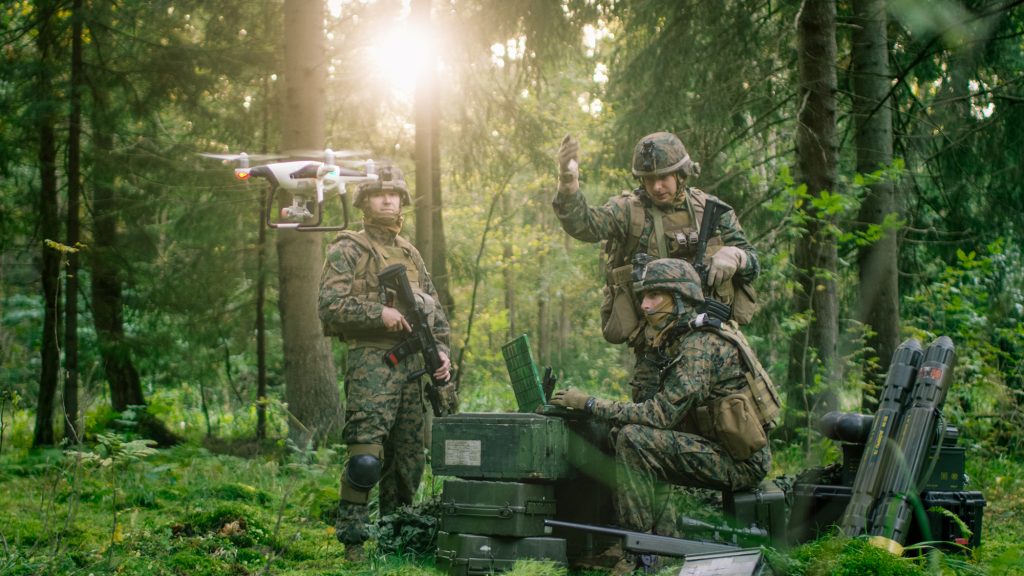
Drones got their start in widespread use from the military. This practice never really disappeared, instead expanding to different military units across more countries. Nowadays, there is probably no modern military force that does not use drone technology in some form.
Drones are ideal for military use as they can provide intelligence and reconnaissance without having to expose field personnel to any hazards. This is particularly important in military operations in warzones. Drones have also been used in active combat operations, although this remains a controversial topic.
Patrolling of marine and land borders
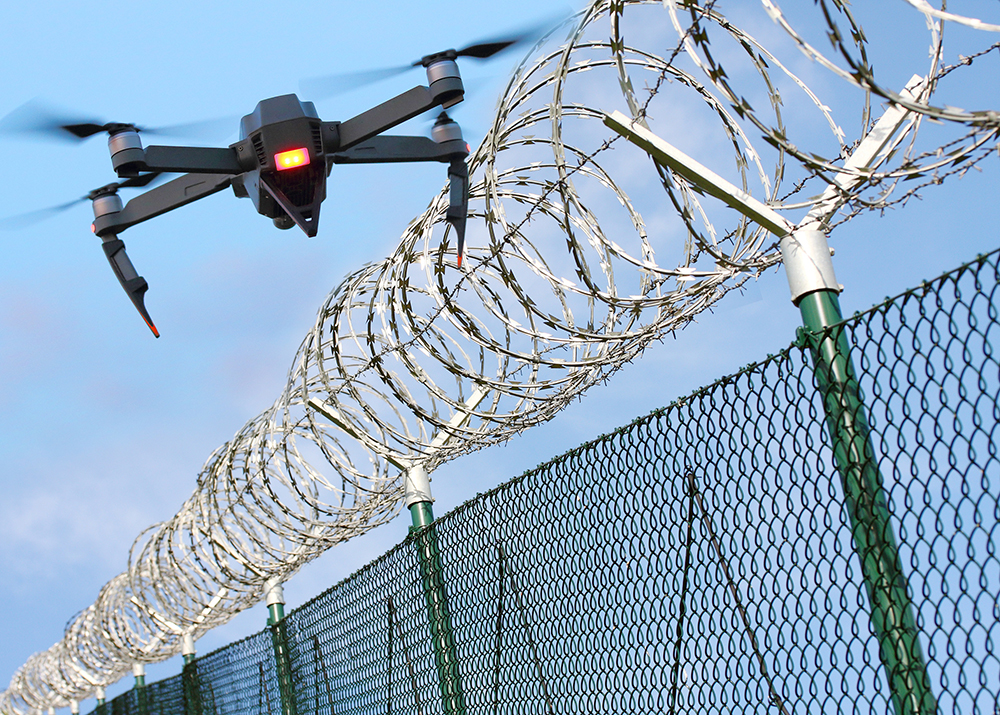
Border patrol is one of the most demanding jobs for any security firm. With such a vast area to secure, searching for intruders is a lot like looking for a needle in a haystack. The wide field of view and aerial vantage of drones has helped border patrol forces all across the world, especially with their advanced imaging capabilities.
One of the more interesting applications of drones for border patrol is being done by the European Maritime Safety Agency (EMSA). Instead of relying only on visual indicators to detect intruders along marine borders, they have equipped drones with sniffer drones with air pollution sensors that can detect high levels of sulfur emission. A positive alarm can indicate the presence of a nearby ship.
Perimeter security of private lands
Factories, power plants, farms, and houses all around the world have started to use drones to facilitate regular perimeter inspection. Drones can be automated to fly along pre-determined paths and conduct fly-bys at set schedules. This is vastly more reliable and efficient than having security personnel doing regular rounds on foot.
A company called Sunflower Labs demonstrates an example of how home drone security can be taken to the next level. The system includes a drone, an automatic weatherproof charging dock, an assortment of bollards that act as motion detectors. When detectors sense a vibration, it sends a signal to the drone to perform automatic surveillance.
The Sunflower Labs drone system is still very expensive and will likely still encounter various problems related to drone regulations. Still, the concept is a great glimpse at the future of drone-based security systems.
Anti-poaching
One of the more noble applications of drone technology is its use to aid efforts to reduce wildlife poaching. As anyone can imagine, doing a patrol to look for poachers across vast plains and forests can be incredibly difficult. Whether in Africa or Asia, wildlife protection groups have turned to drone technology to help them catch these poachers.
Drones with thermal imaging capabilities have proven to be valuable, especially since these poachers typically take cover in the darkness. They can also cover hundreds of acres in just a few minutes, which means that they are fast enough to give chase.
Aside from anti-poaching initiatives, wildlife protection groups have also used drones to track migration patterns, assess animal population numbers, or to help identify new animal species.
Several issues of using drones for security
No matter how they are used, drones are still a young technology that is yet to reach widespread acceptance. As the technology evolves, legislation and policy on drone use continue to evolve as well. In the realm of security-related applications, drone use still has to contend with several restrictions which may limit the degree at which they are utilized.
FAA restrictions
Any drone pilot who uses drones for security, even those connected to the federal government, needs to secure a Part 107 drone license from the FAA. The Part 107 rules constitute the FAA’s standards for commercial drone flight, requiring that commercial drone pilots adhere to a minimum proficiency standard and follow the restriction set by the FAA.
A couple of these restrictions can prove to be problematic for security-related applications. An example is the rule that limits drone flight to visual line-of-sight. This means that a drone can only fly as far as the pilot can maintain enough visual contact to determine the aircraft’s location and attitude. This prevents the execution of truly “autonomous” drone flight as it requires that a human drone pilot remains involved in the operations.
The Part 107 rules also prohibit drone flight over people who are not participating in the activity, as well as over moving vehicles. This can be problematic when doing drone surveillance over large tracts of land with substantial foot and vehicular traffic.
By default, commercial drone flight is allowed only during daytime and civil twilight. This puts a hamper on all the night-time surveillance uses of drones that we have mentioned repeatedly.
The silver lining is that the FAA grants waivers for every single provision that we have mentioned here so far. All waiver applications are subject to approval by the FAA, but a large security firm with a well-established drone security program should have no problem with the process. The FAA continues to review and revise these policies in the hopes of helping the commercial drone industry thrive.
Privacy and safety concerns
For as long as drones were a thing, they were always seen by the public as threats to privacy and security. This is hardly unreasonable, given all the ways in which drones have been used for voyeurism. Irresponsible drone use is also very common, the most recent of which resulted in a temporary halting of a baseball game in the Wrigley Field in Chicago.
Before widespread drone use for security becomes a thing, there needs to be a system for drones to be identifiable and their pilots to be held accountable. This seems to be the goal for the recently proposed RemoteID system by the FAA which requires that drones transmit critical identification data through radio or mobile data channels.
Unfortunately, the FAA proposal caused a whole debacle because of how the system can put drone pilots at risk. With the NRPM receiving over 50,000 comments, it seems like the FAA has a lot of work to do to come up with a solution that is acceptable and sustainable to all parties involved.
Final thoughts
The mobility, ease of deployment, and versatility of drones have made them valuable tools in the field of security for both private and public entities, No longer does aerial surveillance have to be done by helicopters, or for ground-based security teams to spend precious minutes to respond to an emergency situation. Drones can travel to any site quickly, perform routine perimeter checks, and even track intruders under the cover of darkness.
While drones are undoubtedly valuable in security, their full potential is still limited by the existence of several restrictions on drone use. Not undermining these rules, most of the drone community agree that they are necessary. As technology and legislation continue to evolve, we await for the day when regulation and growth can reach a happy compromise.
